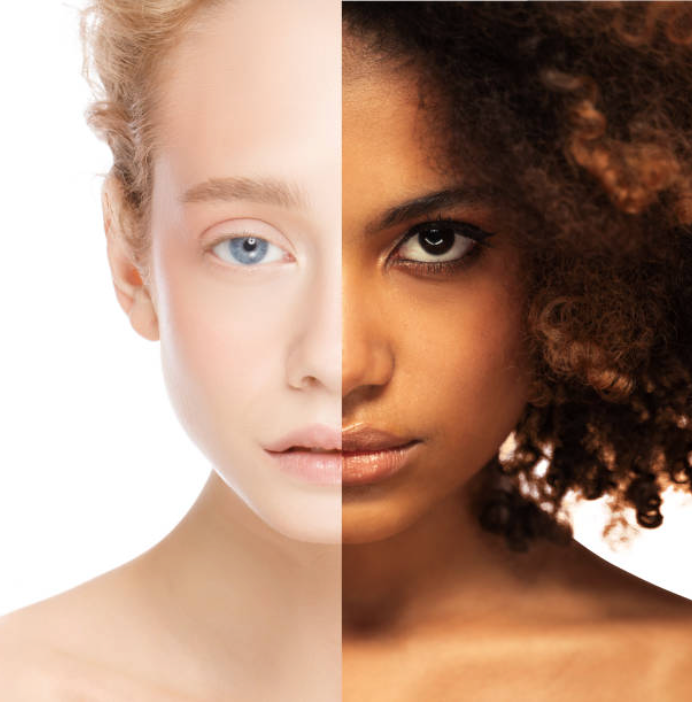
Disparities in Beauty
The beauty industry is a multi-billion dollar industry that has a massive impact on the lives of people all around the world. From cosmetics to skincare, the industry plays a crucial role in how people feel about themselves and how they present themselves to the world. However, despite its widespread influence, the beauty industry is not free from disparities.
Disparities in the beauty industry refer to the inequalities and differences that exist in terms of access to and representation in the industry. These disparities can be based on a number of factors, including race, gender, age, socioeconomic status, and more. In this blog, we will explore some of the most significant disparities in the beauty industry and their impact on society.

Race-based Disparities
One of the most significant disparities in the beauty industry is based on race. Historically, the beauty industry has largely focused on serving white consumers, with little to no consideration for the unique needs of people of color. This has led to a lack of representation of people of color in advertising, marketing, and product development. Furthermore, products marketed towards people of color are often more expensive and less widely available than those marketed towards white consumers.
This disparity has been gradually changing over time, with more companies focusing on creating products that cater to the needs of people of color. However, there is still a long way to go before true equality is achieved. One example of this is the limited shade ranges in makeup products, which makes it difficult for people with darker skin tones to find products that match their skin.
In addition, the representation of Black beauty brands who are well positioned to change these disparities face even deeper challenges. A recent report by McKinsey (June 2022) highlights Black people's experience within the beauty industry is markedly more frustrating with Black consumers being three times more likely to be dissatisfied than non-Black consumers. For brands specific, Black brands make up only 2.5 percent of revenue in the overall beauty industry, while Black consumers are responsible for 11.1 percent of total beauty spend. Overall Black consumers do not see themselves in beauty.
Gender-based Disparities
Gender-based disparities in the beauty industry primarily focus on the representation of women. While women make up the majority of consumers in the beauty industry, they are often underrepresented in positions of power within the industry. This means that women have little say in the products that are created and marketed towards them, leading to a lack of diversity and innovation in the industry.

Furthermore, the beauty industry has historically perpetuated narrow and unrealistic beauty standards for women, which can have a negative impact on their self-esteem and mental health. This can be seen in advertising campaigns that promote thinness, youthfulness, and flawless skin and hair as the ideal standard of beauty, leading to body image issues and unhealthy behaviors.
Age-based Disparities
Age-based disparities in the beauty industry refer to the limited representation of older consumers. The industry largely focuses on youthfulness, with anti-aging products and advertising campaigns targeting middle-aged consumers. This can leave older consumers feeling overlooked and ignored by the industry.
Furthermore, the industry often perpetuates ageism, with older models and celebrities being less frequently represented in advertising campaigns and product launches. This can lead to feelings of inadequacy and invisibility for older consumers, who are often a significant part of the beauty industry's customer base.

Socioeconomic-based Disparities
Socioeconomic-based disparities in the beauty industry refer to the unequal access to beauty products and services based on income. Beauty products and services can be expensive, making them inaccessible to those with lower incomes. This can lead to feelings of exclusion and the perception that beauty is only for the wealthy.
Furthermore, the beauty industry has historically focused on serving affluent consumers, with luxury brands and high-end services being the norm. This can lead to a lack of diversity in the industry, with few products or services catering to the needs of lower-income consumers.
Disparities in the beauty industry are widespread and significant. They can be based on a range of factors, including race, gender, age, and socioeconomic status. These disparities can lead to feelings of exclusion, inadequacy, and invisibility for certain groups, and perpetuate narrow and unrealistic beauty standards. In some cases may even lead to unintended health consequences. It is essential that the industry works towards greater diversity, inclusivity, and representation, to ensure that all consumers feel seen and heard, with access to the right product for every consumer. By removing these disparities, there lies greater opportunity for everyone in the industry.
At Sáfo Hair, we truly strive to be inclusive and accessible. Our company is dedicated to supporting the BIPOC community. As a woman-owned and Black-owned business, we will continue to work to provide health, safe products for all of our customers.

